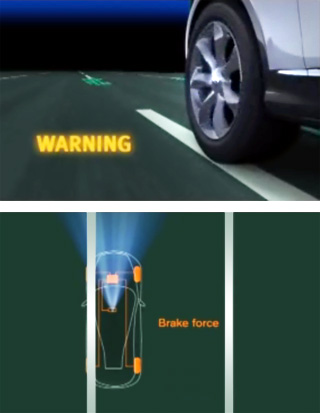
LONDON – Major European vehicle makers are joining forces to road-test new intelligent and safety technologies under real conditions.
Ford of Europe Inc., BMW AG, Fiat Automobiles SpA, Daimler AG, Volkswagen AG and MAN AG, along with intelligent safety equipment public-private partnership ERTICO, started a 3-year test program in May on 1,500 vehicles.
The project, dubbed “euroFOT” (FOT for “field operational tests”), is half-funded by the European Commission’s Seventh Framework Program for Research of Information Society Technologies.
It has 28 partners, including vehicle manufacturers, research institutes and leading automotive-technology suppliers. Total costs are estimated at €22.1 million ($34.7 million).
The field tests will assess equipment designed to prevent collisions and accidental lane departures, regulate speeds through curves and detect driver impairment. Adaptive cruise-control systems, speed limiters, blind-spot detection systems and other devices designed to improve the safety of human-machine interaction also will come under scrutiny.
Vehicles from 11 brands, including those made by the participating manufacturers, will be involved in the tests.
Key objectives are to obtain technical and scientific data for system design and product development and to apply the FOT results to overall European and global conditions.

The tests will serve as the basis for a cost-benefit analysis of advanced, intelligent systems and provide an overall assessment of their impact on traffic safety and infrastructure efficiency.
Based on previous experience in Europe, the U.S. and Japan, FOTs are an excellent way to raise awareness, collect real data and enhance the market-penetration rate of information and communication technologies, the European Commission says.
The euroFOT program, effectively, has two coordinators. Ford Research and Advanced Engineering Europe is leading the actual testing and ERTICO is coordinating FOT-NET, the means by which information will be shared among the partners and publicized.
Results indicating which systems work most effectively on which models is expected to be of particular interest to vehicles and auto parts manufacturers worldwide.
“Complexity is the bane of dependability,” says ICT Results, an arm of the European Union’s CORDIS (Community Research and Development Information Service) project. “The more complex a system, the more likely it will suffer potentially catastrophic errors.”
“The problem is there are a lot of safety systems, but they are standalone, so in the future we will have to combine them,” adds Vera Lauer, coordinator of the EU-funded EASIS (Electronic Architecture and System Engineering for Integrated Safety) project to build an integrated safety system for the automotive industry.
One challenge for euroFOT will be to pinpoint software glitches that cause electronic controls to work beautifully on one model but not as well on another.
However, the project isn’t about determining whether one auto maker’s systems are better than another’s, says Christoph Kessler, senior research engineer at Ford in Aachen, Germany.
“It’s about looking at the overall efficiency of these intelligent functions – whether they avoid critical situations, whether people feel safer when driving, and under less strain,” Kessler tells Ward’s.
The tests, he says, are first of all about collecting and analyzing data in Europe.
“Improvement to systems will come later, when results are published, and improvements to individual systems will be carried out by manufacturers under their own initiative,” Kessler says.
“The test results are public. That’s why the EC is paying around half the costs of the project,” he adds. “That’s also a reason why benchmarking is not intended, as many euroFOT partners receive only 50% of their costs.”
Kessler isn’t worried about confidentiality issues or negative publicity.
“Disastrous results are not expected, because we are testing systems already on the market,” he says. “The public has had access to them for some time – adaptive cruise control, for example.”




